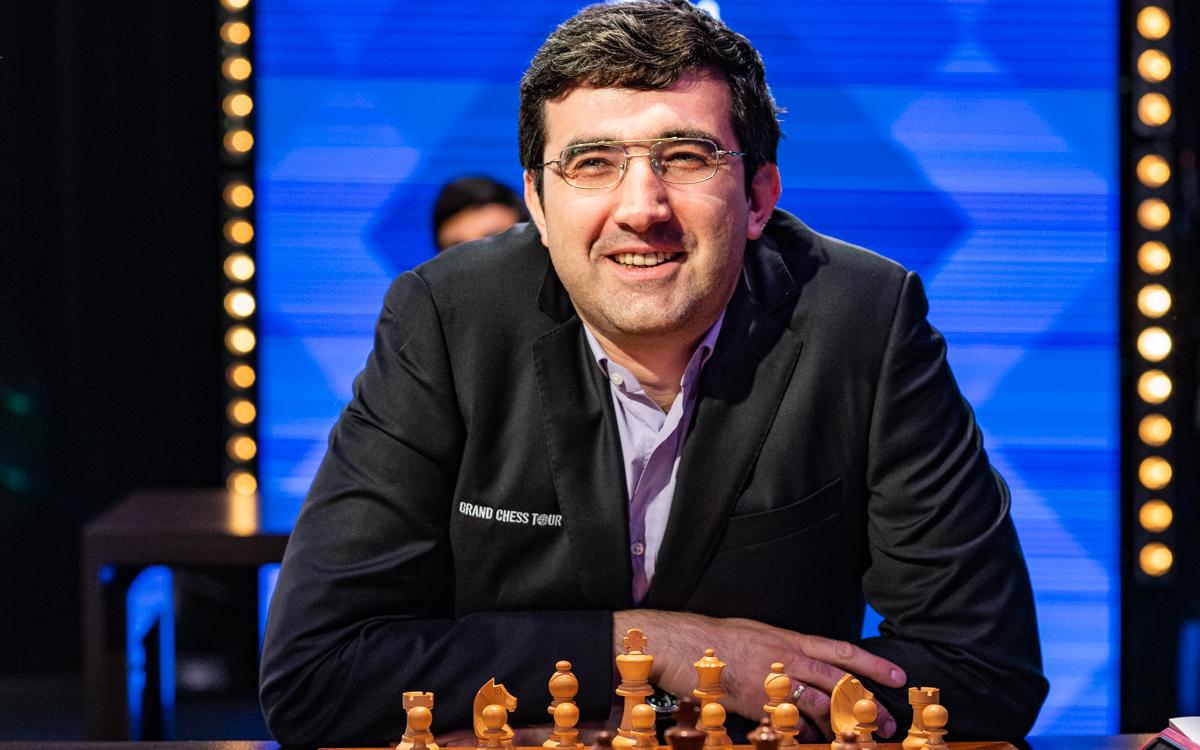
How Vladimir Kramnik Became A Super Grandmaster
I have been lucky to play in tournaments with chess players who later became super grandmasters or even world champions. The transformation of talented juniors into the best players in the world was usually a gradual process.
With Vladimir Kramnik it was totally different. At the end of 1991, we played together in the last Soviet championship. Even though it was clear that the once-mighty Soviet Union was rapidly disintegrating, it was difficult to imagine that it was going to die in just a couple of months. But it was even more difficult to imagine that in just half a year, the FIDE master Kramnik would become one of the best players in the world!

I should clarify what I mean. First, Kramnik's title shouldn't fool you. Even though he was just a FIDE master, all professional players knew about Kramnik's enormous talent. To some extent the situation was very similar to when Viktor Korchnoi defected from the Soviet Union and the Soviet chess federation stripped him of all his chess titles. As the story goes, GM Makarichev was giving a lecture and somebody from the audience asked him about Korchnoi:
"If he is no longer a Soviet grandmaster or master, who is he then?"
Makarichev paused for a second and then said: "He is a candidate master, but a very strong one!"
The same could have been said about Kramnik: He was a FIDE master, but a very strong one! By the way, in the above-mentioned Soviet championship, Kramnik played the following game in the variation that he showed me 10 months earlier:
I was proud that I was able to improve the play of my teacher against the same opponent.
This game allowed me to get my first GM norm!
As I already mentioned, at that time I played in tournaments with Kramnik quite frequently. Even though it was absolutely clear that someday he would become one of the world's top players, it felt like he was still one of us. When I say "us," I mean the new generation of young IMs and GMs.
Look for example at the next game:
In the opening I got myself into a very dangerous situation, but after thinking for about 30 minutes I found a very interesting pawn sacrifice. At the end Kramnik offered me a draw in an unclear position. As you can see, we could still deal with this young FIDE master then.
The situation changed completely in the duration of just one tournament. Of course I am talking about 1992 Olympiad in Manila. It is a well-known story how despite very strong opposition, Garry Kasparov managed to include a FIDE master who wasn't even 17 into a star-studded Russian team. Vladimir Kramnik scored 8.5 out of 9 and produced a number of gems. I particularly like the following game because I watched it live, since it was played less than 10 feet from my board.
It was very unusual to see grandmaster John Nunn, who was one the world's leading experts in the King's Indian Defense, lose like this.
That chess Olympiad was very memorable for me. Our team, Uzbekistan, created one of the biggest sensations of the Olympiad by finishing second after the Russian powerhouse. I scored my final GM norm there and got the title right away.
My memory of that Olympiad is like a kaleidoscope showing very bright images: outstanding accommodation in five-star hotel and an excellent buffet three times per day, a wild Bermuda party with a grandmaster fistfight and a picture of a female IM in the tournament bulletin with a clearly visible and deliberate wardrobe malfunction.
What I don't remember is Kramnik outside the chessboard. He kept a low profile during the whole Olympiad and even his 17th birthday on the last day of the Olympiad went generally unnoticed. I guess he saved his energy for the games. If so, his plan worked to perfection as he showed the best performance rating of the whole Olympiad: 2958.
He also got a brilliancy prize for the next game:
What a slugfest! By the way, I just realized that I never asked Kramnik how he managed to transport that huge and heavy marble chessboard he got as a brilliancy prize.
This Olympiad propelled Kramnik to the very top, so to me there are two different Kramniks: one of them before the Olympiad and a totally different Kramnik after the Olympiad. Don't get me wrong, even after the Olympiad he was still the same modest and very pleasant person. And it was still possible to compete with him at the chessboard. For example, in the next big open tournament we played together—the 1992 Alekhine Memorial in Moscow—I finished in a big tie for second place behind GM Tiviakov, who was the clear winner of the tournament. Kramnik tied for ninth place.
Nevertheless, I could clearly see that Kramnik was already in a league of his own.






